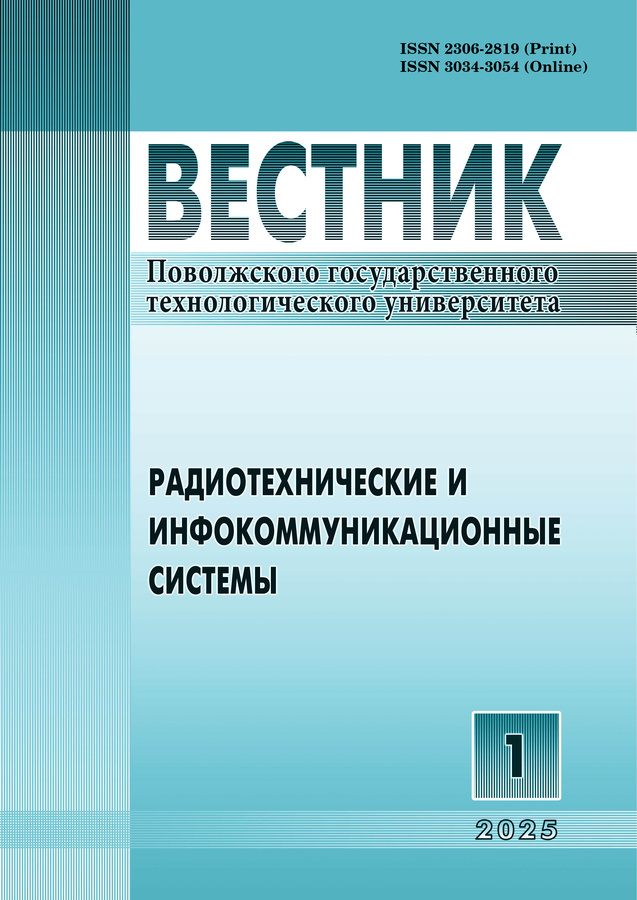Разработка и исследование математической и программной моделей вычислительной системы сенсорного устройства ввода информации
- Авторы: Козин А.В.1, Фрейман В.И.1
-
Учреждения:
- Пермский национальный исследовательский политехнический университет
- Выпуск: № 2 (2024)
- Страницы: 44-56
- Раздел: ВЫЧИСЛИТЕЛЬНАЯ ТЕХНИКА И ИНФОРМАТИКА
- URL: https://journal-vniispk.ru/2306-2819/article/view/270558
- DOI: https://doi.org/10.25686/2306-2819.2024.2.44
- EDN: https://elibrary.ru/JSICLW
- ID: 270558
Цитировать
Полный текст
Аннотация
В статье рассмотрена реализация сенсорного устройства, предназначенного для работы в агрессивных условиях. Это является актуальной задачей вследствие необходимости применения надёжных и защищённых средств ввода информации в управляющих и вычислительных системах различного назначения. Для локализации места касания предложен оригинальный физический принцип действия устройства, основанный на использовании акустических волн, создаваемых при контакте с панелью. Разработаны аналитическая и численная модели вычислительной системы сенсорного устройства, проведено их исследование. Для решения систем нелинейных уравнений использованы численные методы (нелинейный системный решатель, метод Гивенса и метод Ньютона), оценена их точность и вычислительная сложность, что важно для последующей практической реализации. Исследовано влияние расположения микрофонов на панели, задания начальных характеристик и изменение геометрии панели на точность определения места касания. Предложенные аналитические и программные модели позволили обеспечить точность принятия решения не менее 99 %, а также дать практические рекомендации по конструктивным параметрам устройства и программным настройкам его вычислительной системы.
Полный текст
Об авторах
Алексей Владимирович Козин
Пермский национальный исследовательский политехнический университет
Автор, ответственный за переписку.
Email: AVKOZIN@pstu.ru
SPIN-код: 5194-8038
аспирант, ассистент кафедры автоматики и телемеханики
Россия, 614990, Пермь, Комсомольский проспект, 29Владимир Исаакович Фрейман
Пермский национальный исследовательский политехнический университет
Email: AVKOZIN@pstu.ru
ORCID iD: 0000-0001-8492-8065
SPIN-код: 9553-3735
доктор технических наук, доцент, профессор кафедры автоматики и телемеханики
Россия, 614990, Пермь, Комсомольский проспект, 29Список литературы
- Singh G. Touch screen driving: A novel and efficient design for automation //2014 World Automation Congress (WAC). IEEE, 2014. Pp. 634-638. doi: 10.1109/WAC.2014.6936074
- Avutu S. R., Bhatia D., Reddy B. V. Design of touch screen based robot with obstacle detection module for autonomous path navigation // TENCON 2017-2017 IEEE Region 10 Conference. IEEE, 2017. Pp. 2127-2131. doi: 10.1109/TENCON.2017.8228212
- Turn any display into a touch screen using infrared optical technique / J. R. Liang et al. // IEEE Access. 2018. Vol. 6. Pp. 13033-13040. doi: 10.1109/ACCESS.2018.2812756
- Самарин А. Сенсорные панели NORITAKE для жестких условий эксплуатации // Компоненты и технологии. 2015. №. 8. С. 11-14.
- Самарин А. Новые сенсорные технологии для компьютерных устройств ввода // Компоненты и технологии. 2007. №. 1. С. 52-58.
- Compressive sensing-based sound source localization for microphone arrays / M. Qin et al. // Circuits, Systems, and Signal Processing. 2021. Vol. 40. Pp. 4696-4719. doi: 10.1007/s00034-021-01692-y
- Donoho D. L. Compressed sensing // IEEE Transactions on information theory. 2006. Vol. 52. №. 4. Pp. 1289-1306. doi: 10.1109/TIT.2006.871582
- FRL: Fast and reconfigurable accelerator for distributed sound source localization / X. Ding et al. // IEEE Transactions on Computer-Aided Design of Integrated Circuits and Systems. 2022. Vol. 41. №. 11. Pp. 3922-3933. doi: 10.1109/TCAD.2022.3197537
- Gu J. C., Lin W., Kan C. X. Sound source localization using piezoelectric acoustic metasurfaces // Acoustics Australia. 2020. Vol. 48. Pp. 455-461. doi: 10.1007/s40857-020-00205-2
- Thakallapalli S., Gangashetty S. V., Madhu N. NMF-weighted SRP for multi-speaker direction of arrival estimation: robustness to spatial aliasing while exploiting sparsity in the atom-time domain // EURASIP Journal on Audio, Speech, and Music Processing. 2021. Vol. 13 (2021). Pp. 1-18. doi: 10.1186/s13636-021-00201-y
- Козин А.В. Сенсорное устройство ввода информации на основе акустических измерительных устройств // Вестник Пермского национального исследовательского политехнического университета. Электротехника, информационные технологии, системы управления. 2023. № 46. С. 178–195. doi: 10.15593/2224- 9397/2023.2.08
- Contact Spot on a Display Surface / A. Kozin et al. // 2022 Conference of Russian Young Researchers in Electrical and Electronic Engineering (ElConRus) // IEEE, 2022. Pp. 349-351. doi: 10.1109/ElConRus54750.2022.9755516.
- Qu Y.J., Hu B.G. A Scilab toolbox of nonlinear regression models using a linear solver // 2011 IEEE International Workshop on Open-source Software for Scientific Computation, Beijing, China. 2011. Pp. 142-147. doi: 10.1109/OSSC.2011.6184710
- Чабан Е.А. Создание математических моделей в программе SCILAB // Информационно-коммуникационные технологии в педагогическом образовании. 2016. № 4 (42). С. 38-41.
- Study of Effectiveness of Scilab Software Means for Solving Optimization Problems / A. Y. Kudryashova, T. I. Semyonova, V. V. Frisk et al. // 2020 Wave Electronics and its Application in Information and Telecommunication Systems (WECONF), St. Petersburg, Russia. 2020. Pp. 1-5. doi: 10.1109/WECONF48837.2020.9131166
- Семенова Т.И., Загвоздкина А.В., Загвоздкин В.А. Визуализация результатов вычислений в SCILAB // Информатика и кибернетика. 2018. № 4 (14). С. 5-11.
Дополнительные файлы

















